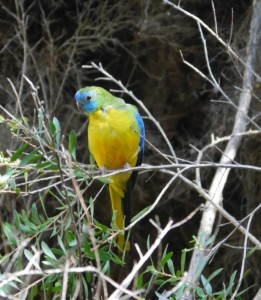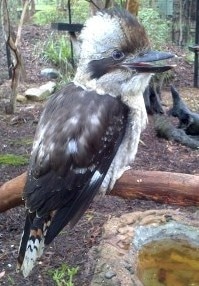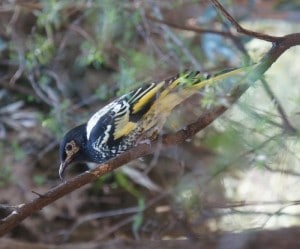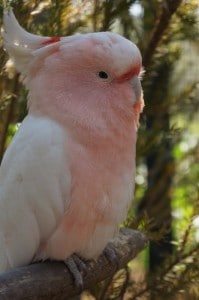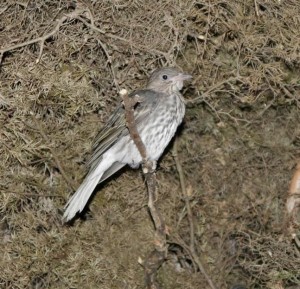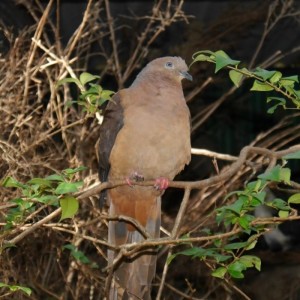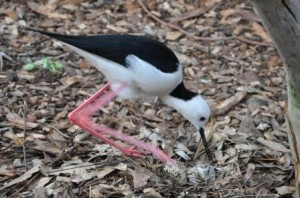-
Turquoise Parrot
cientific Name: (Neophema pulchella) Did You Know? It was considered to be extinct in the wild in 1915! Over 80% of Australia’s temperate woodland (which is Turquoise Parrot habitat) has been cleared and the process is still occurring! This small parrot is about 20cm in length. It has bright green
Laughing Kookaburra
Scientific Name: (Dacelo gigas) Proudly Sponsored by In memory of Savanah Rose Chidgey, Killarney Vale Did You Know? It has the nickname of the ‘bushman’s clock’ due to its dawn and dusk calls. The ‘laughing’ call made by this bird is actually a territorial call, warning other birds to stay
Banded lapwing
Scientific Name: Vanellus tricolor Did You Know? Banded lapwings usually nest in the open with little cover so that they can see danger approaching from a distance. Parents will lure threats away by pretending to be injured, often with a broken wing, and if that fails, will dive-bomb the intruder.
Regent honeyeater
Scientific Name: Xanthomyza phrygia Proudly Sponsored by Jamie, Leeton Did You Know? The birds have a soft metallic song and have been known to mimic other birds such as wattlebirds and friarbirds. When singing, they bob their heads. With its prettily patterned breast, the regent honeyeater is striking and distinctive.
Major Mitchell cockatoo
Scientific Name: (Cacatua leadbeateri) Did You Know? During the mating season, males attract females by strutting along branches bobbing their heads with their crests raised. Adult pairs mate for life and return to the same breeding grounds year after year. Often called a pink cockatoo due to its soft pink
Figbird
Scientific Name: Sphecotheres viridis Did You Know? Figbirds usually nest in groups, with several nests close to each other, high up in the tree canopy. The cup shaped nests are made of vines and twigs and supported by a horizontal fork in the tree branch. These loud birds often feed
Brown cuckoo dove
cientific Name: Macropygia phasianella Did You Know? Brown cuckoo doves make loud whoop-a-whoop call to contact each other. Sometimes called the pheasant pigeon, the brown cuckoo dove has a very long tail and short wings. The dove is grey-brown to a rich dark brown and red-brown, and the male can
Torresian Imperial-pigeon
Scientific Name: Ducula spilorrhoa The Torresian Imperial-pigeon is a large plump pigeon, 38-44 centimetres (15-17.5 inches) in length and with a 45 cm (18 in) wingspan. It is entirely white or pale cream, apart from the black flight feathers (remiges), part of the tail (rectrices) and spots on the undertail
Black-winged Stilt
Scientific Name: Himantopus himantopus The Black-winged Stilt is a large black and white wader with long orange-red legs and a straight black bill. It has black on the back of the neck, a white collar and a red iris. Both sexes are similar, and the plumage does not change during
Green Catbird
Scientific Name: Ptilonorhynchidae The Green Catbird is a large, stout green bird, spotted white, with a dusky crown, nape and face and a white bill. The eye is red. Juveniles are duller in colour. Habitat: The Green Catbird is found along the east coast of Australia, from south-eastern Queensland to

